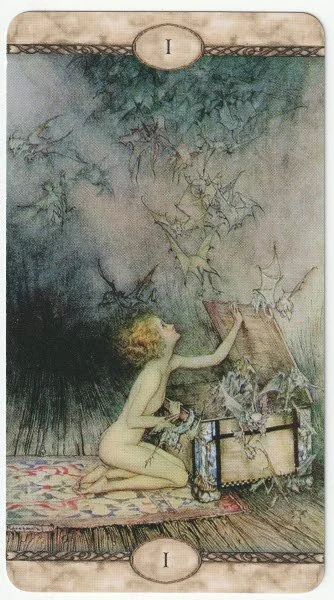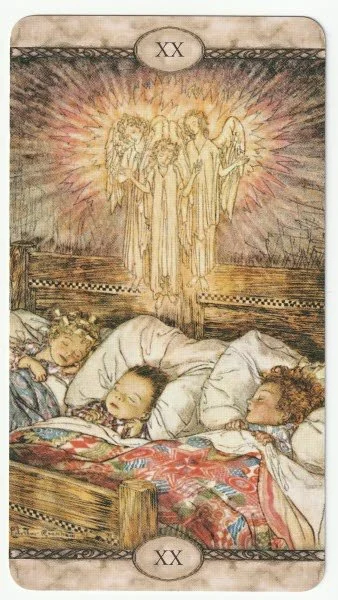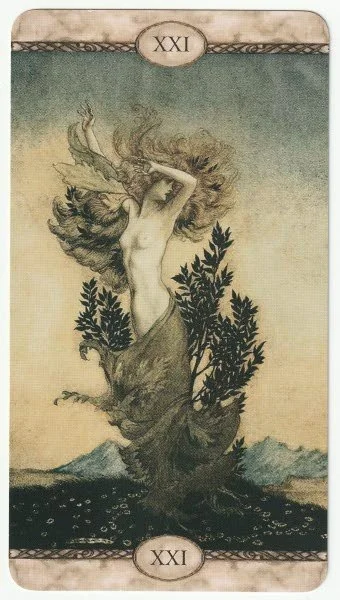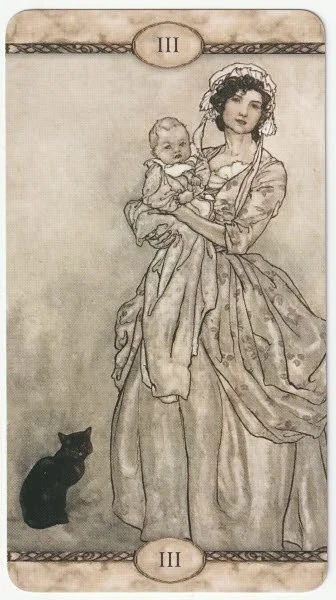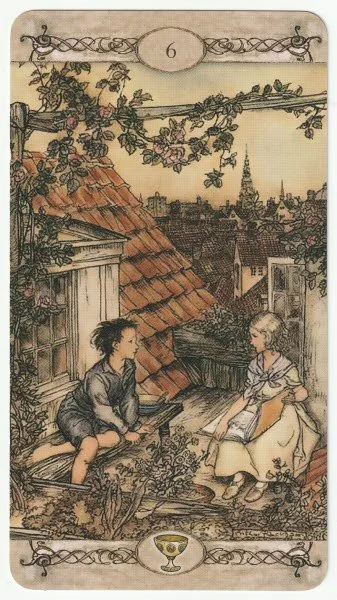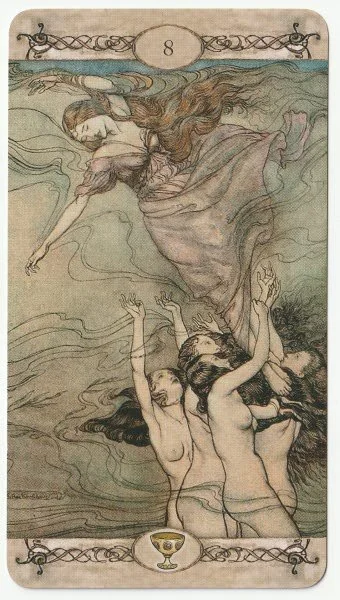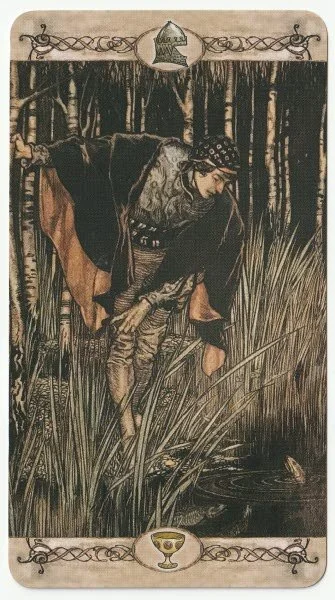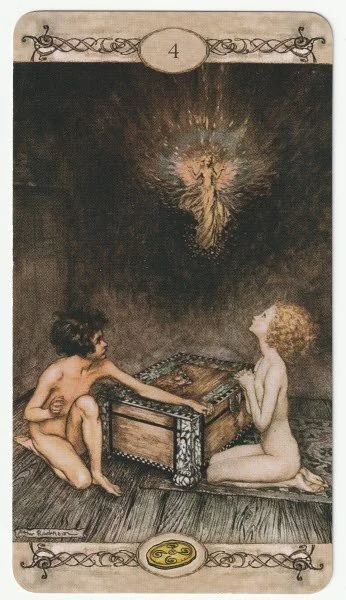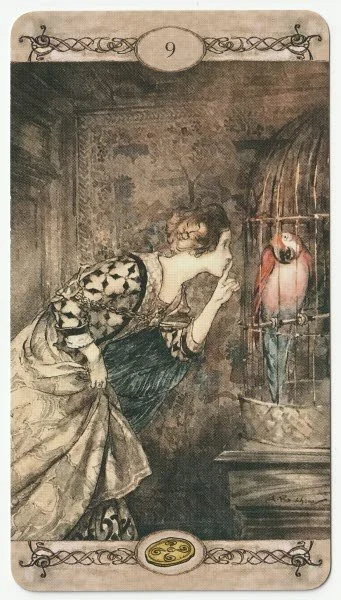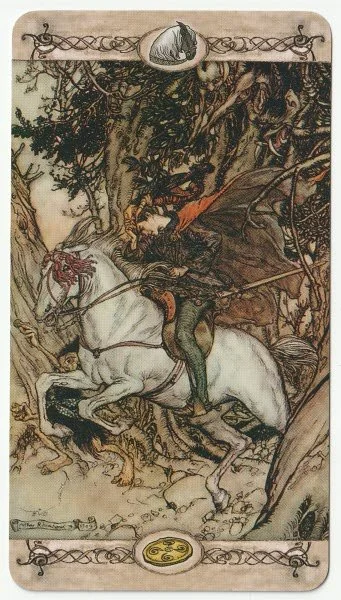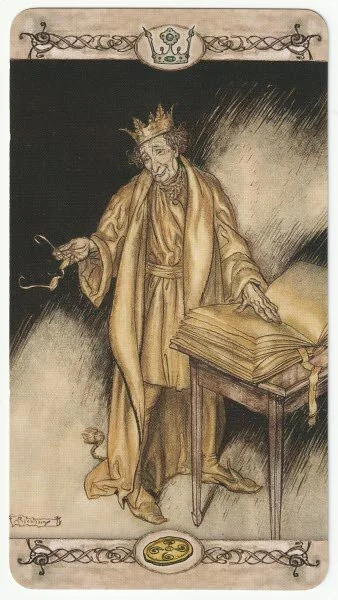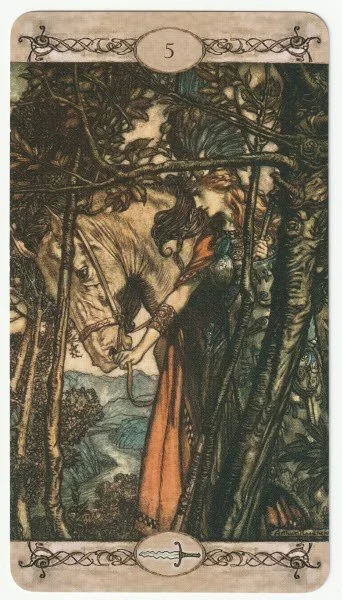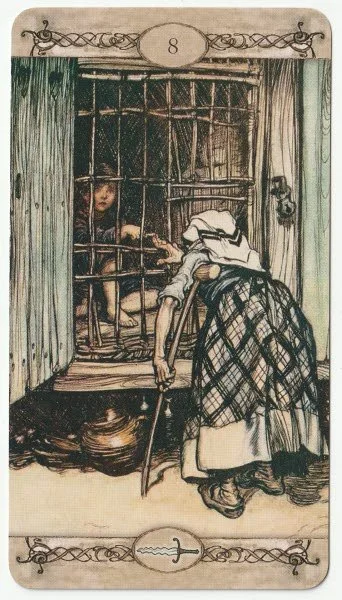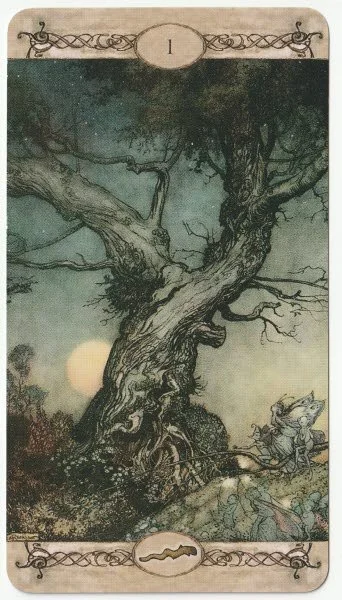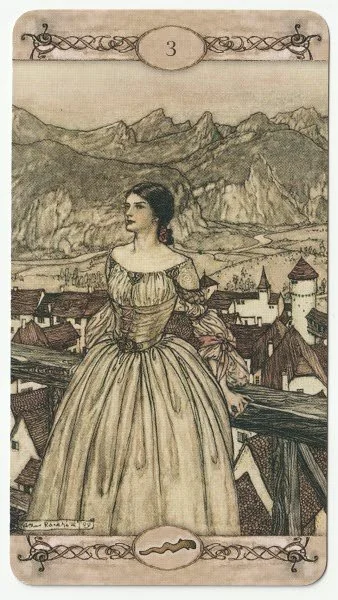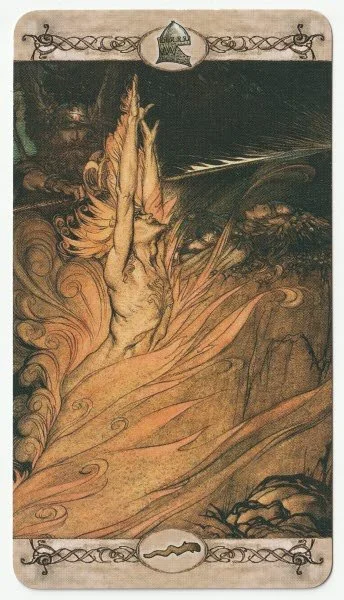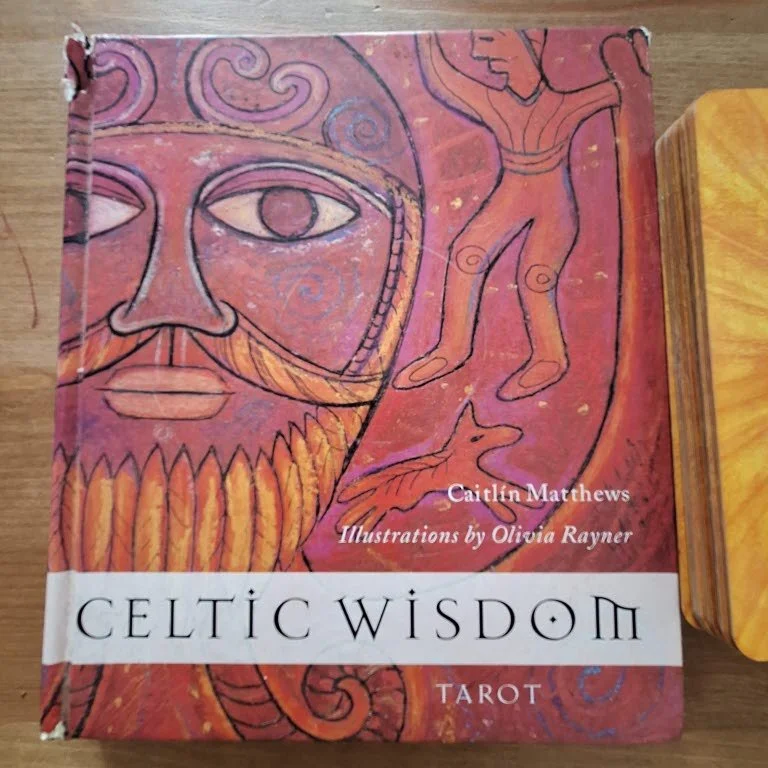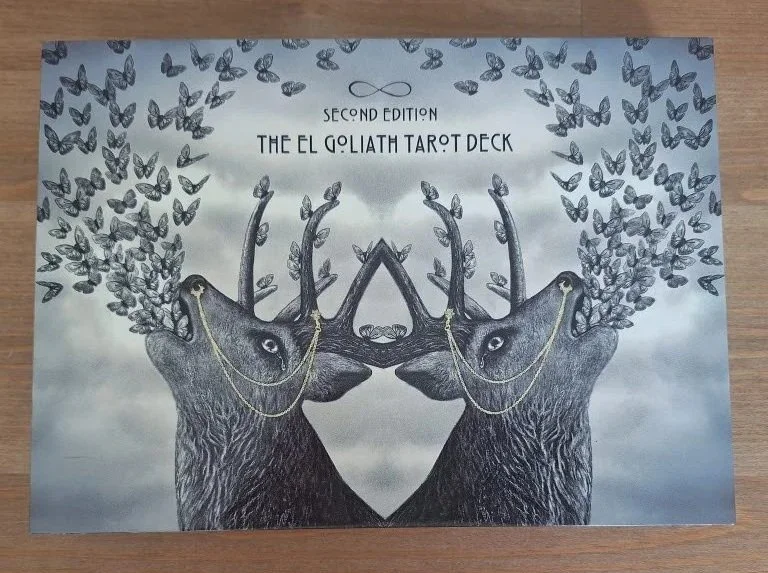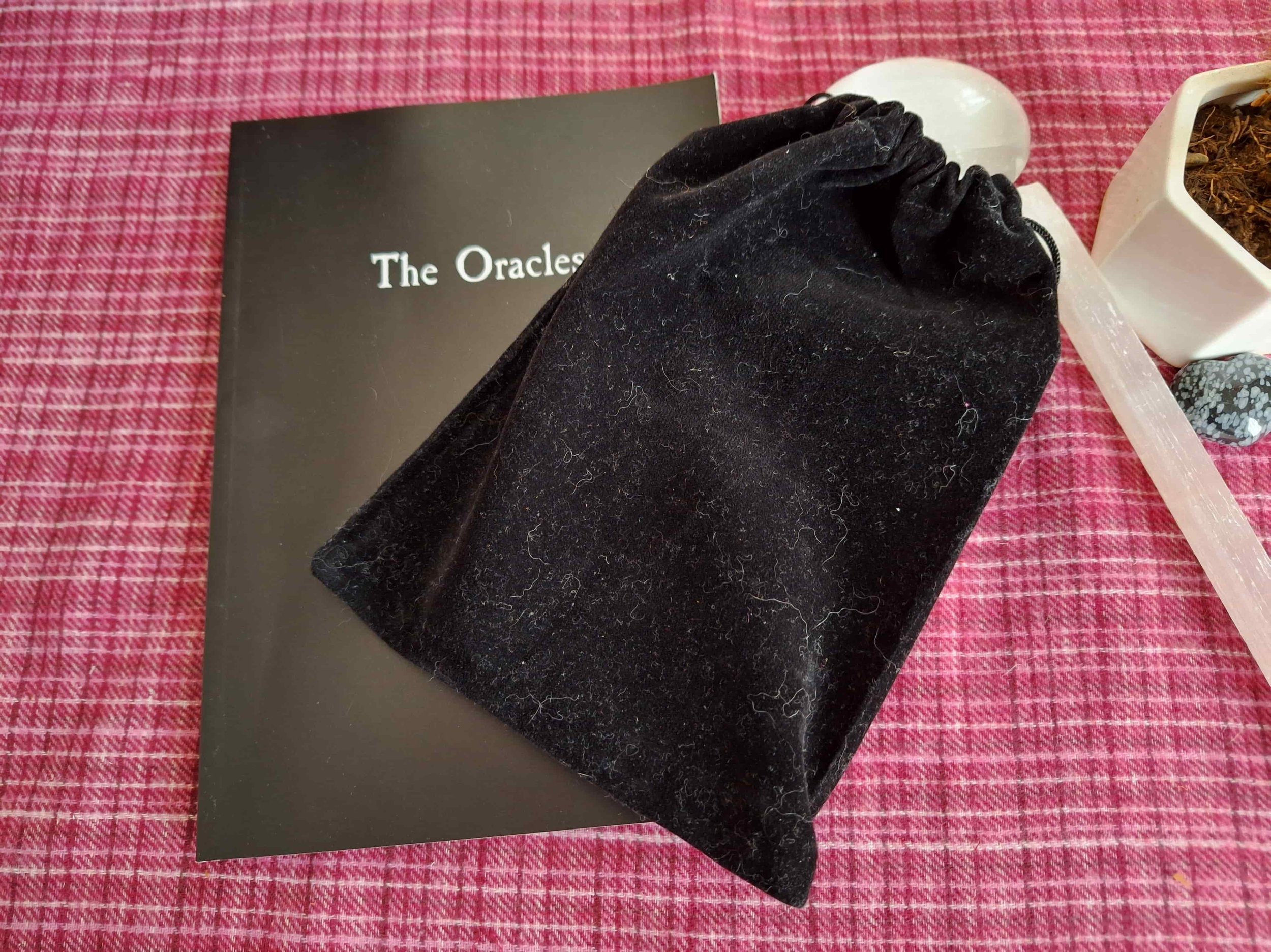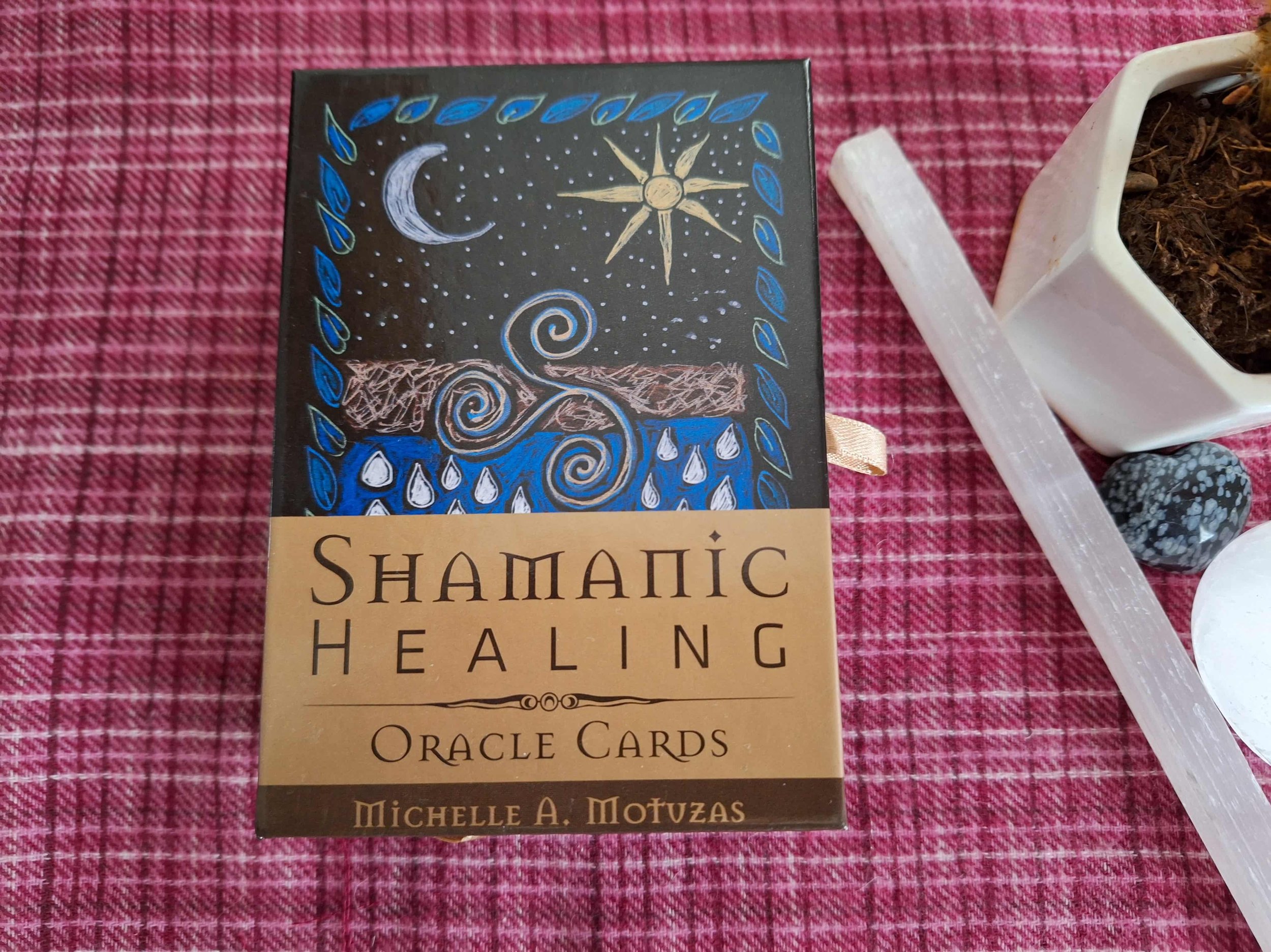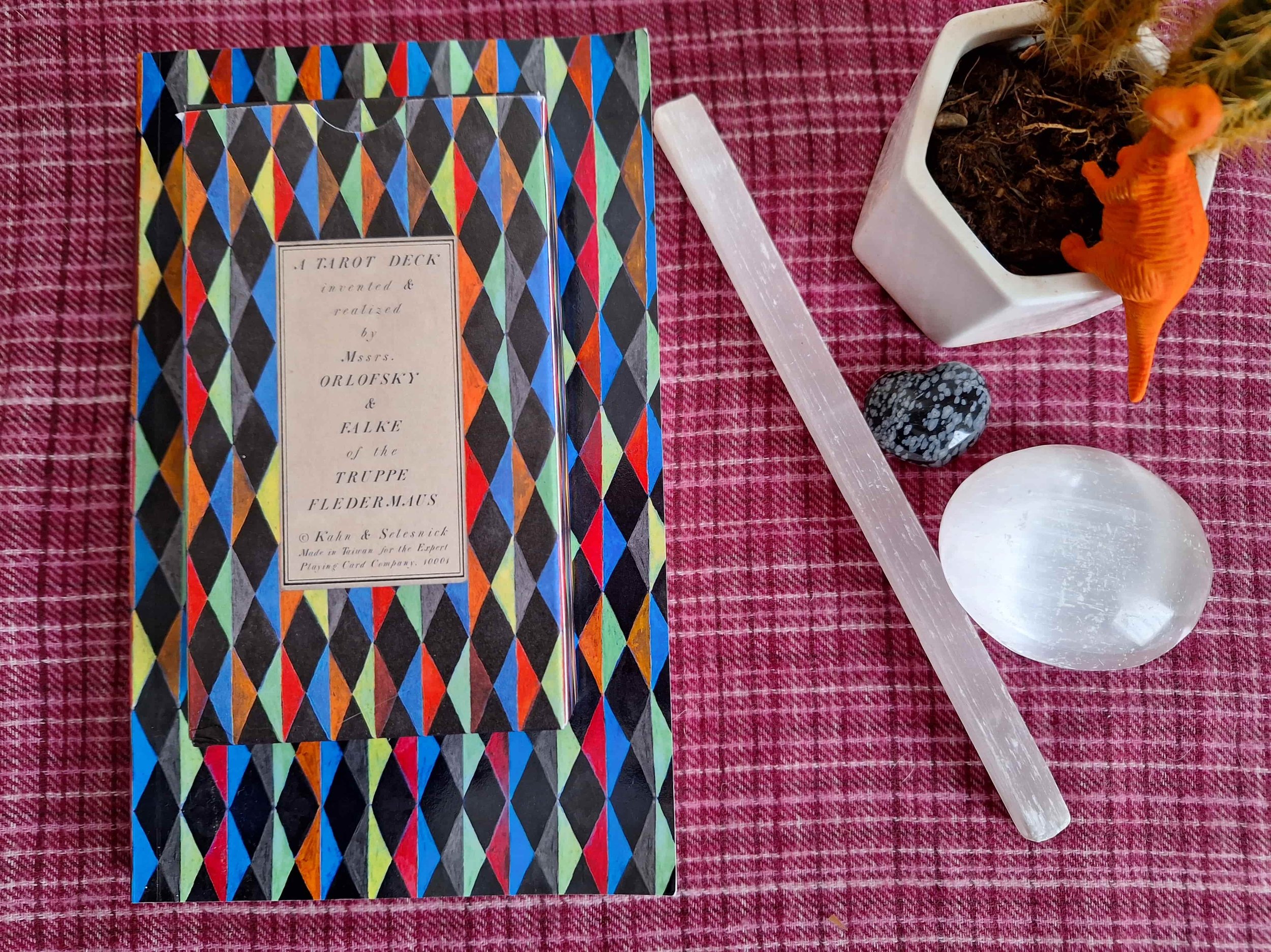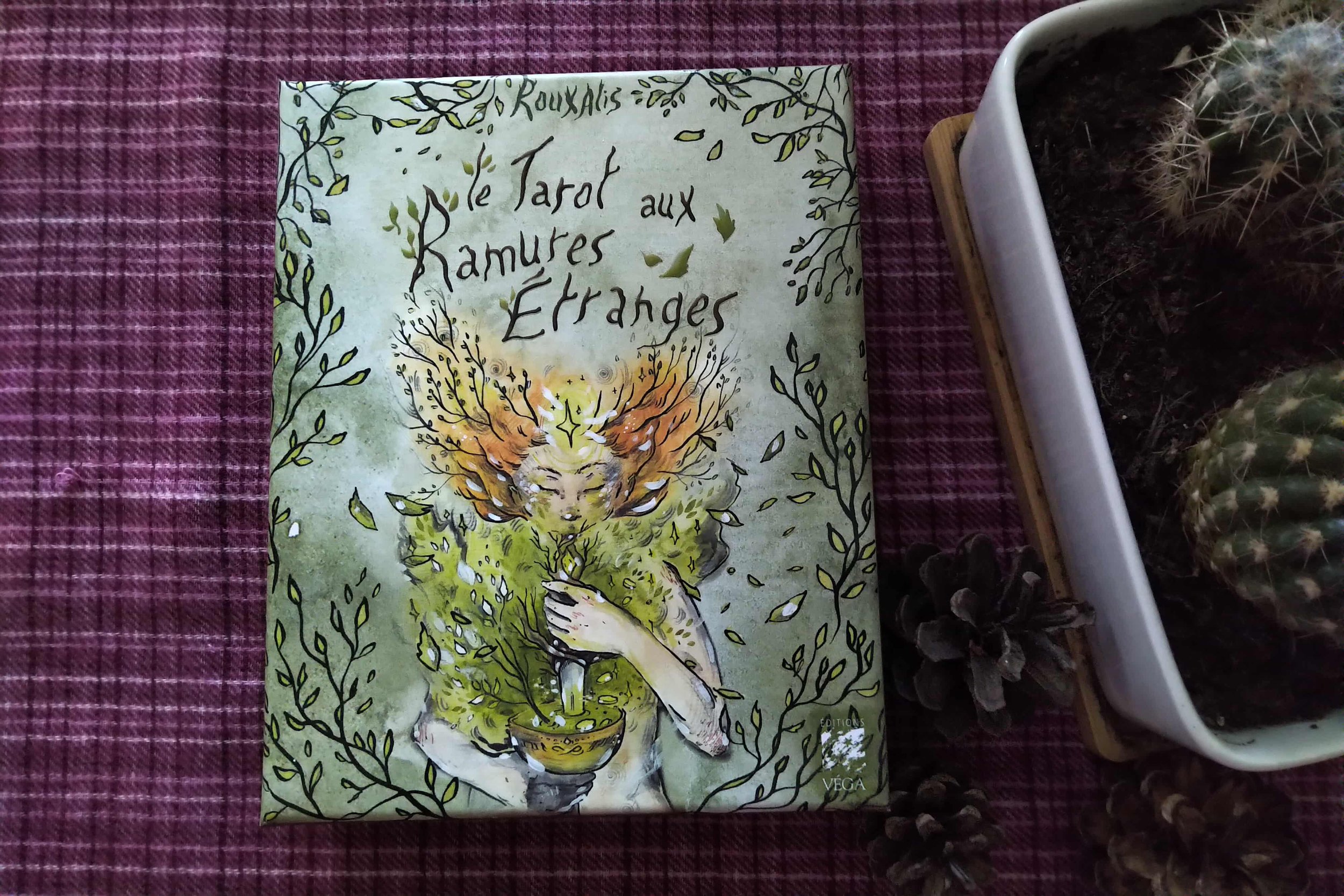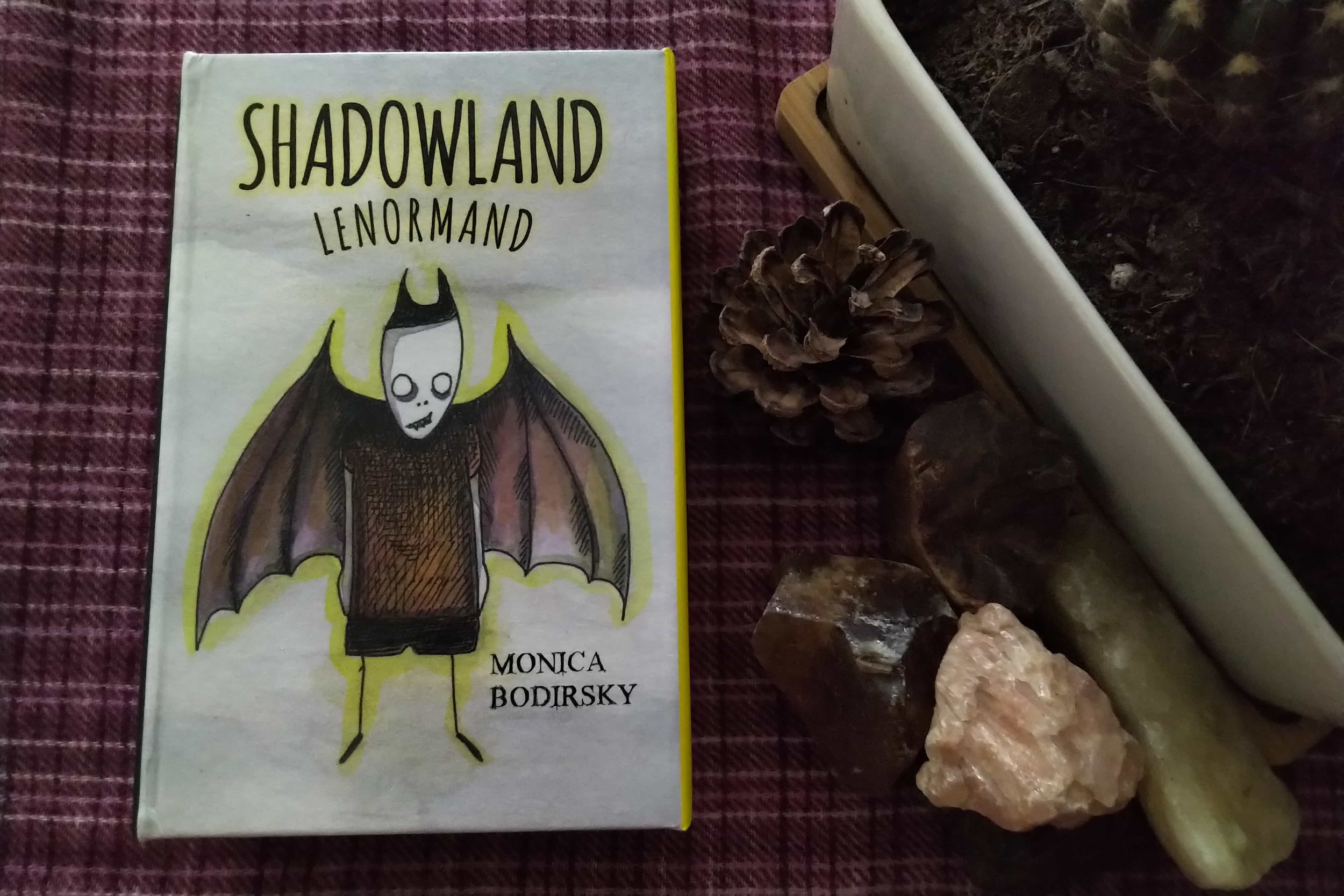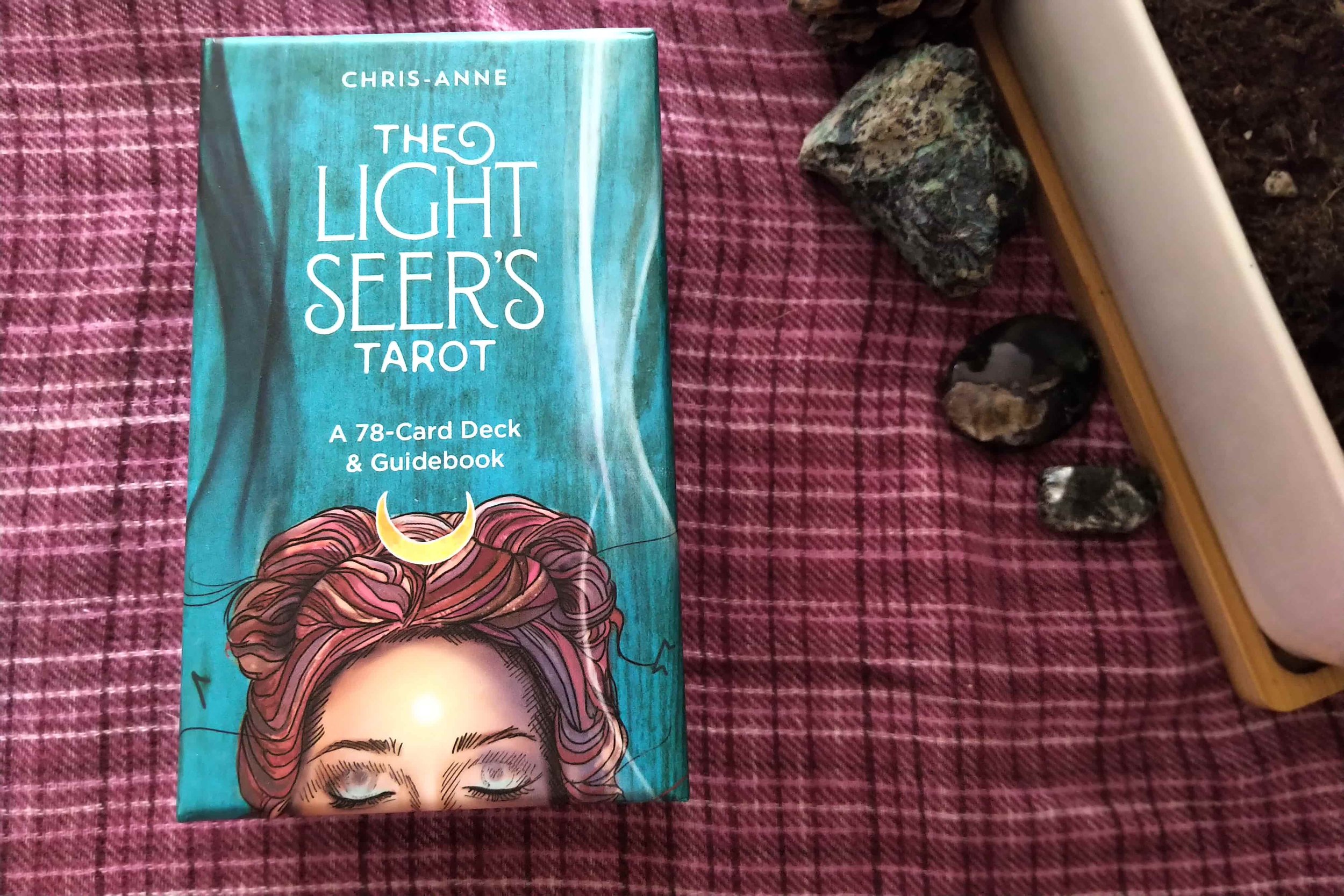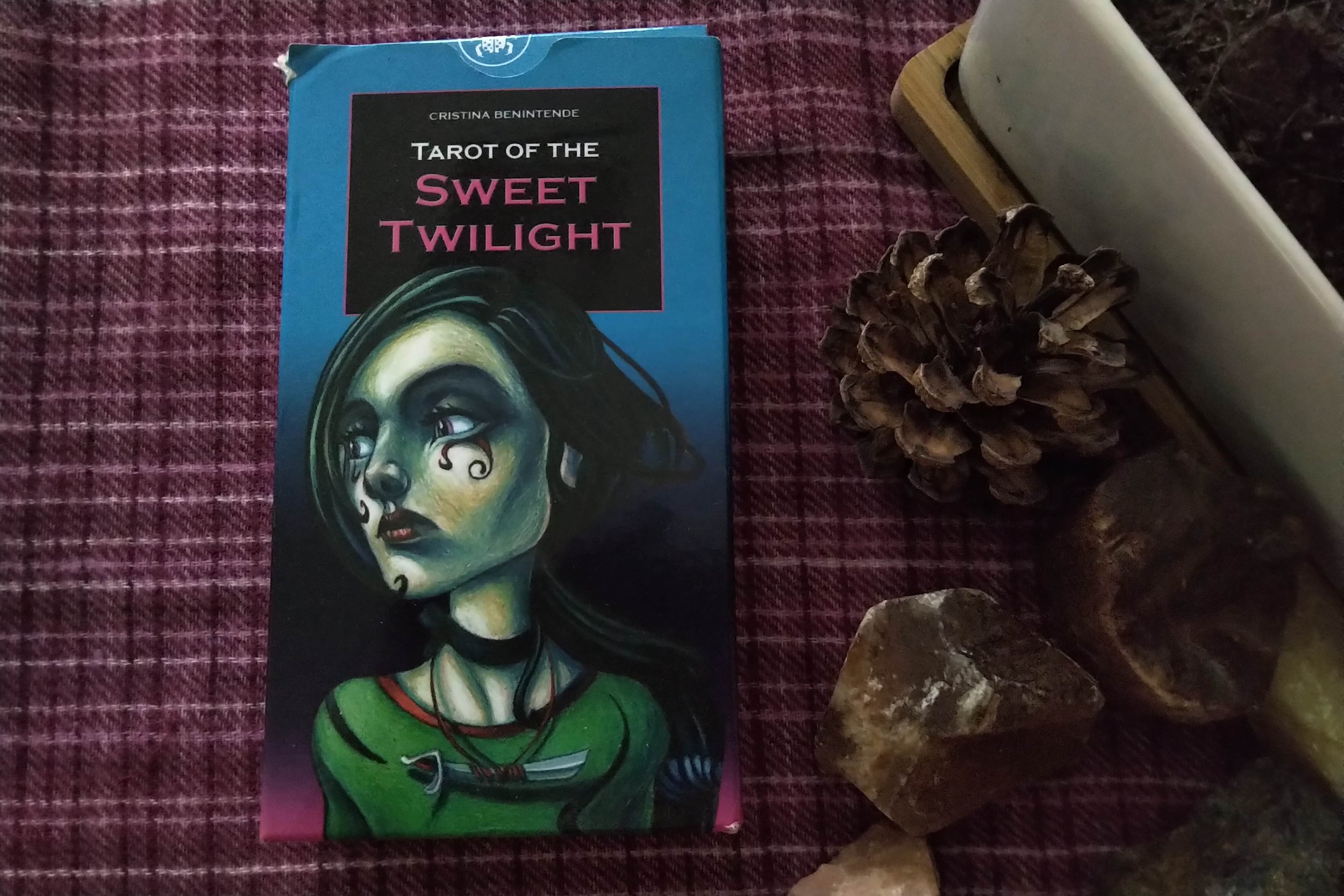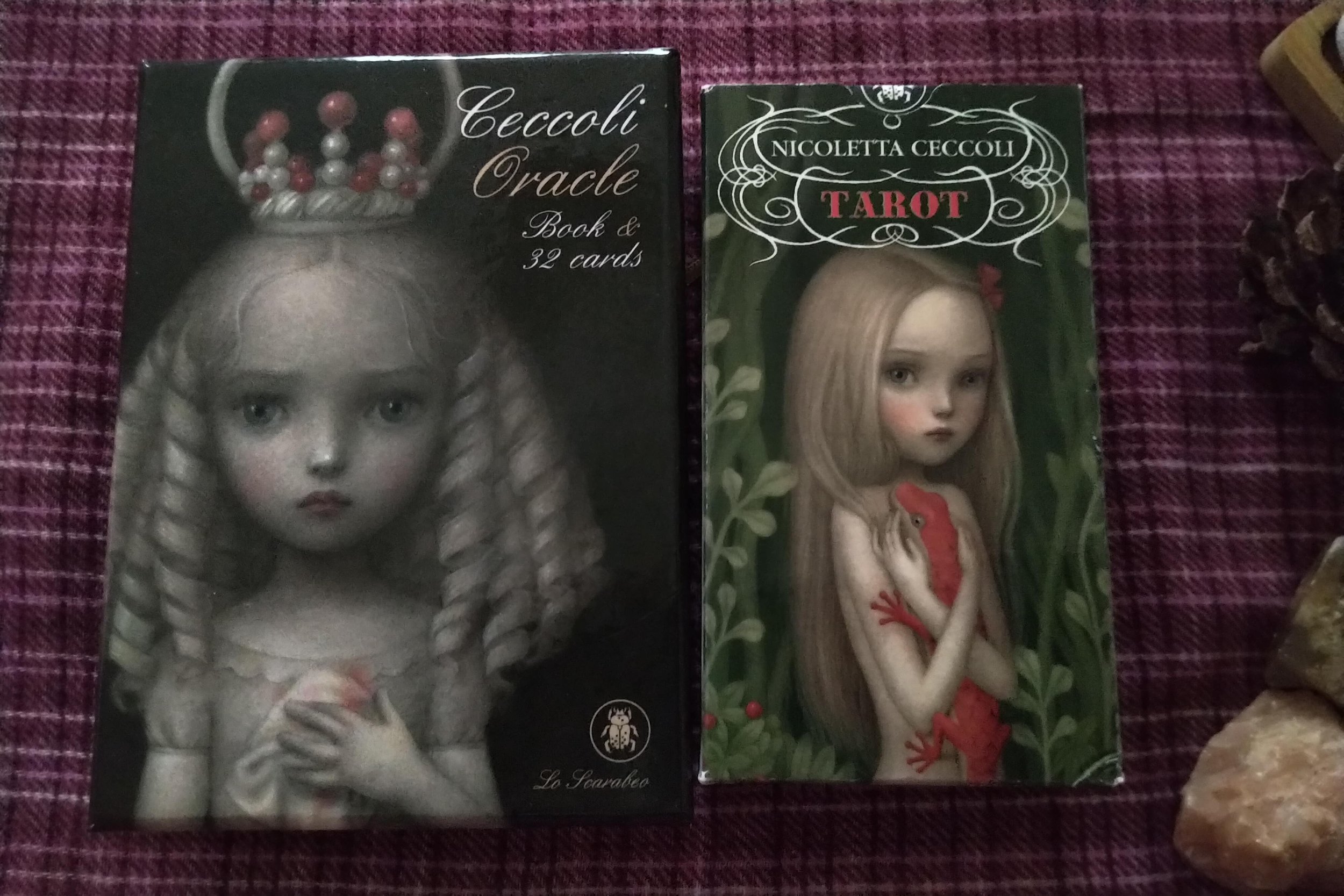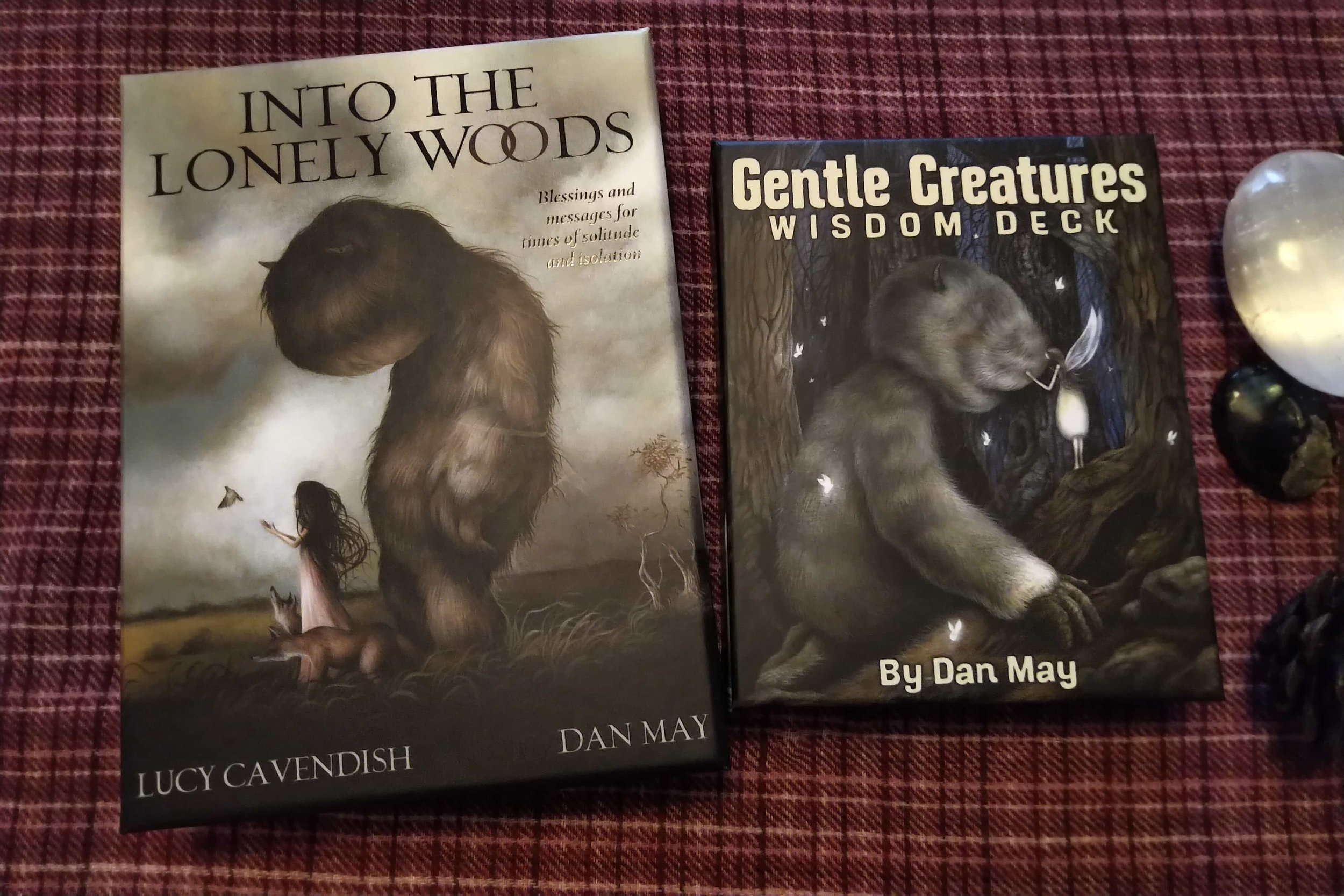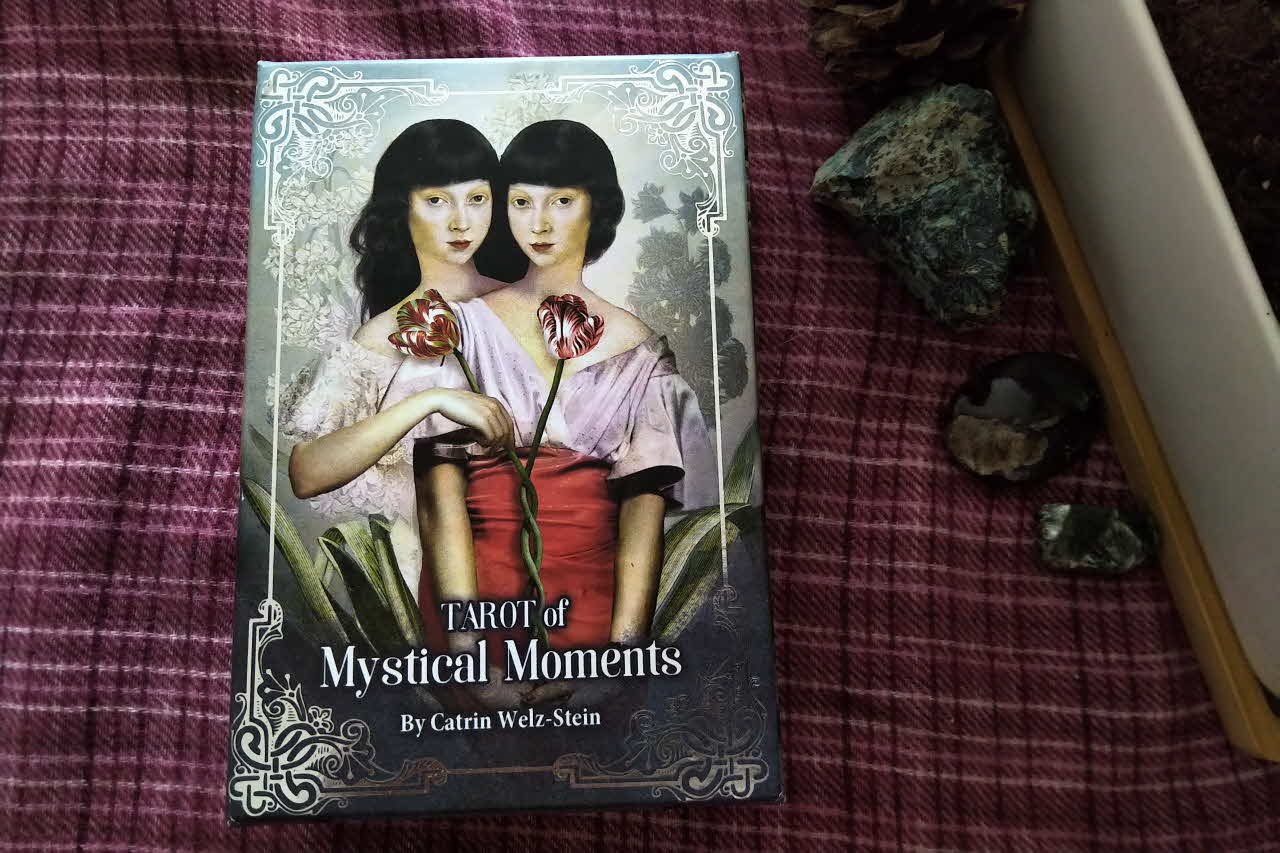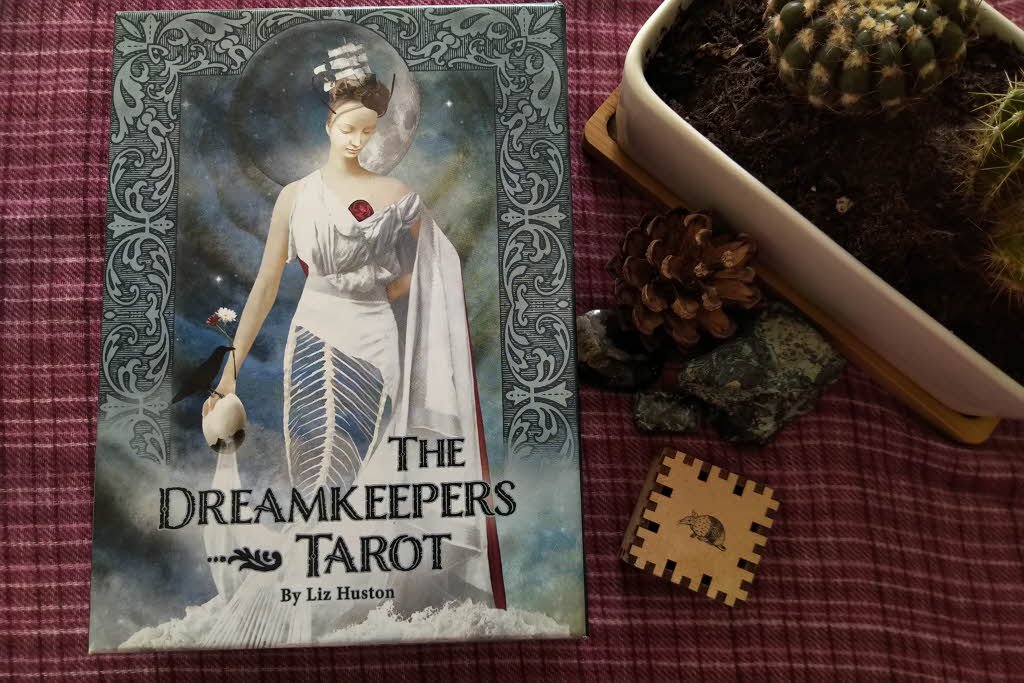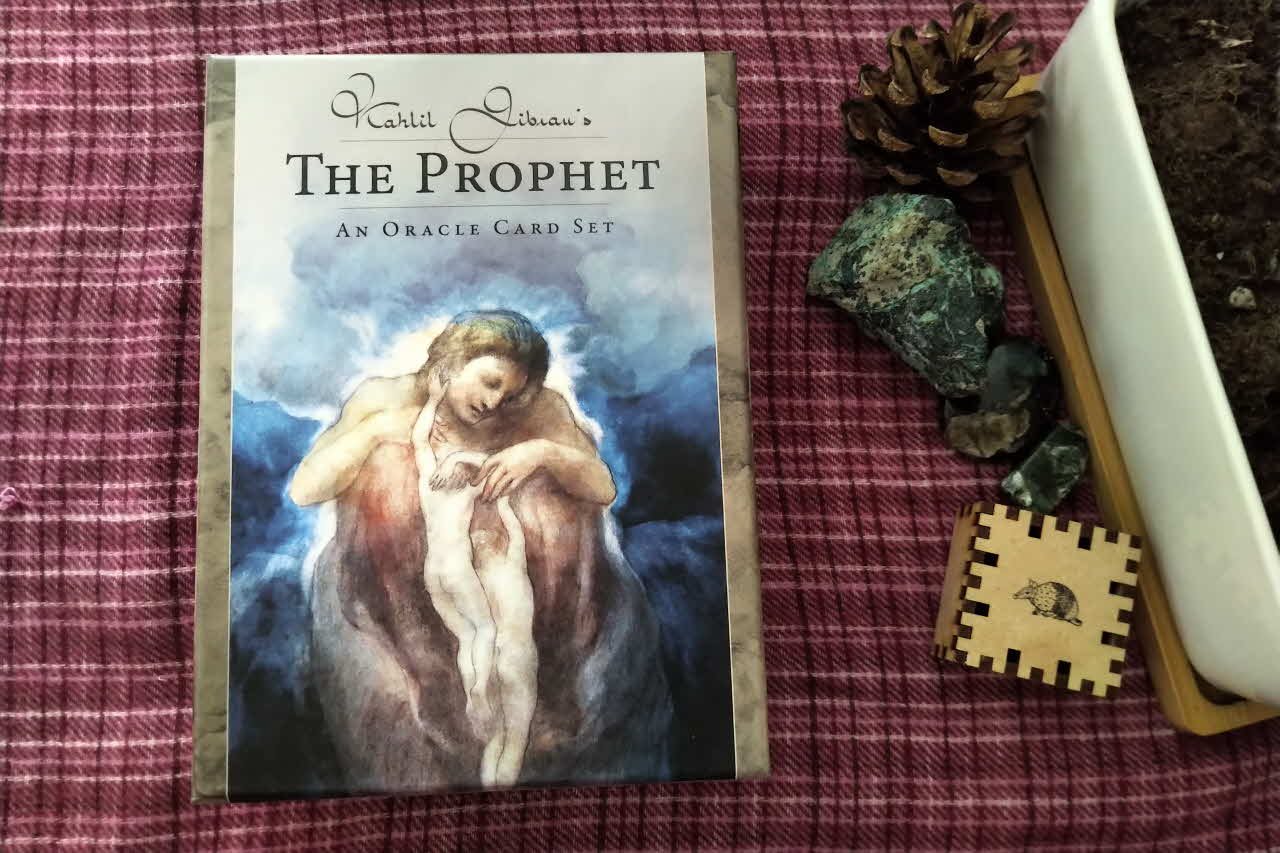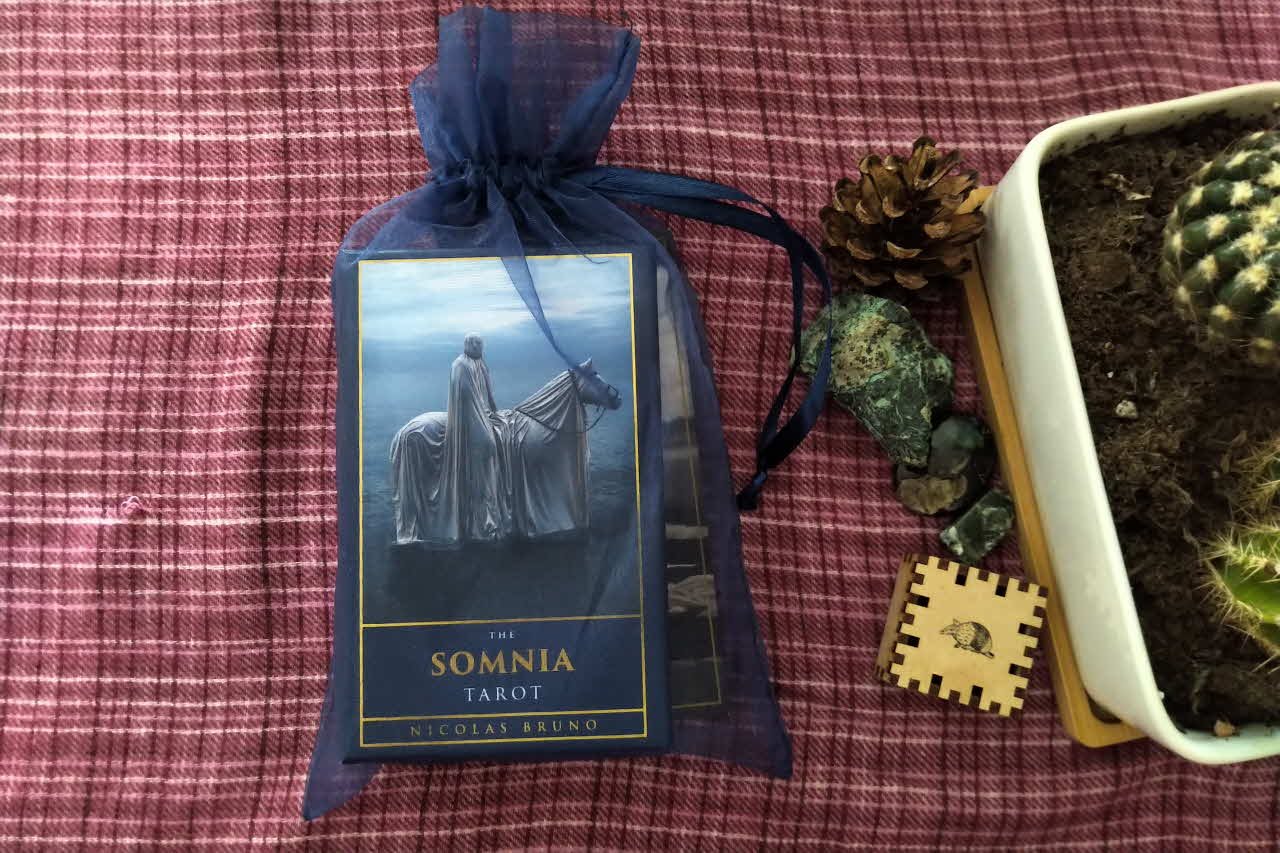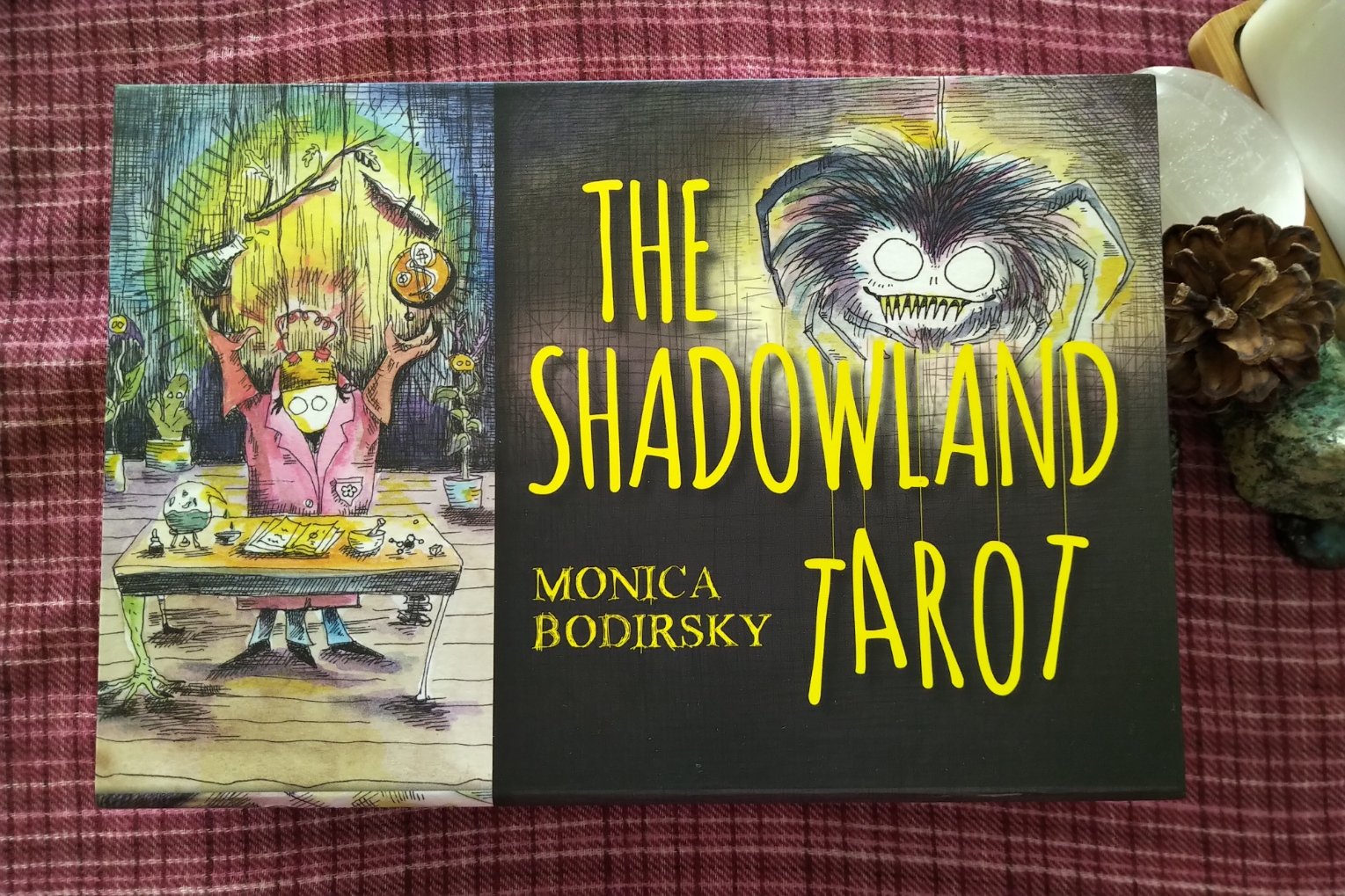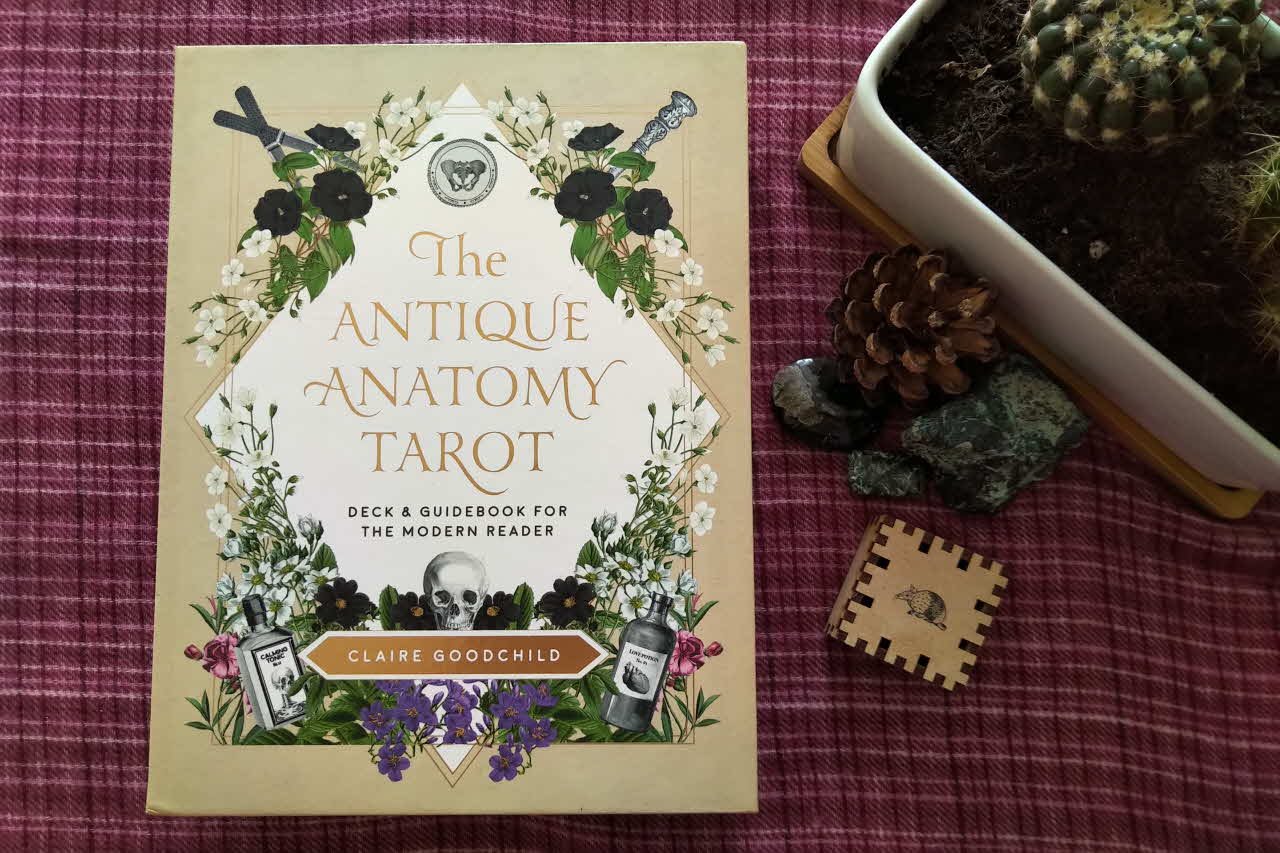The Rackham Tarot & Oracle



I’m always interested in combos of tarot and oracle that work well together. The Rackham Tarot and Fairy Oracle are a natural pairing thanks to the use of Arthur Rackham’s artwork. Lo Scarabeo publishes both. Because the artwork is quite busy and intense, I doubt either deck would be suitable for beginners. That being said, some of the images for the tarot cards are actually very well chosen. A handful of images are in both the tarot deck and the oracle, and it’s these cards I want to give extra attention to in this review. But first things first, and all of that.






















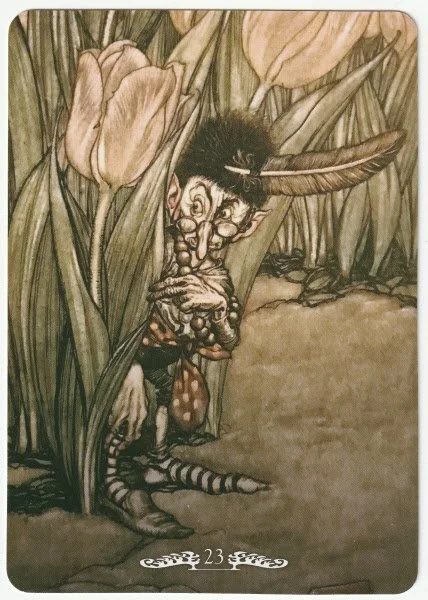






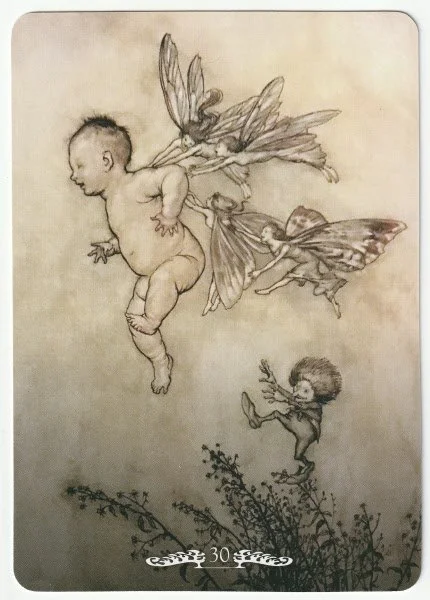






The Fairy Oracle was first published in 2020. The thirty-six cards are laminated, and I honestly wish they had keywords or phrases along the bottom. It comes in a sturdy box and thankfully includes a guidebook written by Jaymi Elford. I admit to feeling quite pleased about the size of the guidebook, but suffered disappointment when I realised it contained the interpretations in six languages. This reduces the amount of information, but it does have some good cards/keywords. Those I especially like include: 3. Night Watch, 6. Siren’s Song, 8. Revolution, 9. Enticement, 11. Secrets, 13. Danger, 15. Defense, 18. Rejection, 21. Fond Farewell, 30. Distraction, 31. Gossip, and 34. Punishment. Some of these would be deemed negative by the love and light brigade, but I prefer a more balanced deck. I do enjoy the artwork, although some cards are much harder to interpret than others. Without keywords, it would be hard work — not impossible by any standard, but if you’re short on time or patience, this deck will push all of those buttons. For lovers of Victorian fairy art, it’s a beautiful deck full of hidden and occasionally very clear symbolism. After looking through the cards again, I can see how it could be a wonderful deck for the winter. It screams suitability for those long nights when the energy is most conducive to study and inner work. We also generally have more time when it’s cold because there’s less reason to be outside. . . patience and solitude are easy to come by when there’s less demand to socialise or cut the grass.
The Rackham Tarot was published a year earlier in 2019. Lunaea Weatherstone wrote the text for the little white booklet — Lunaea has written for a few decks, including Nicoletta Ceccoli’s Oracle. Because it’s a lwb, there are only three lines of information to help with interpretation. As is typical for Lo Scarabeo, it comes in a thin tuckbox. The tarot deck is no easier to read than the oracle, but if you already know the card meanings, at least you’re halfway there. Many of the images are much lighter than the oracle, and I think this helps greatly when trying to look for those tiny details. I will say that some of the images chosen are seriously on point. The Fool, The Empress, The Emperor, The Lovers, Chariot, Strength, Hermit, and so many more. Because of this, I’m going to retract what I said about not being suitable for beginners. Nearly all of the majors stay pretty close to the Rider-Waite imagery — they should be fairly easy to memorise because of the symbols and imagery. My absolute favourite card is The Moon. I love everything about it, from the colour palette to the trees. If I weren’t reviewing both decks, I would’ve had to look at this card in detail. I am going to look closely at three other major arcana cards: The Hanged Man, The Tower, and The Sun, further down this post. Each of these cards appears in both decks, and I’ll write what the books say to give you an idea of the differences between the two.
The minor arcana have all kept their original suits, which at least makes card identification easy. The suit of Cups is a mixed bag when it comes to the images. The Ace, Three, Six, and Ten are all quite similar to what you could expect from a Rider-Waite themed deck. I like the Court cards. The Two, Four, Seven, and Nine are difficult. The Eight of Cups is a beautiful card showing a woman being called down to the depths by three naked females. It could be interpreted in a few different ways. The females at the bottom of the card could represent aspects of the querant or people around her. They could be calling her to dig deeper into her emotions, or they may be dragging her down emotionally. They may be waiting to catch her, although the Eight of Cups doesn’t usually indicate the presence of helpers. The lwb says, “A drowning person pulled down by the already drowned. Avoid negative influences. Fight against depression and despair.” I would be tempted to draw attention to the nakedness of those at the bottom — it could indicate a lack of protection or boundaries somewhere, and also a need for emotional honesty for whatever emotion is felt deep down. The card shows wave movement, and I would take this as a positive sign that emotions are at least in motion rather than stagnant. Although the emotional movement could be part of the problem, too much drama and not enough calm. Or maybe issues with being pulled into situations because other people are incapable of regulating their emotions.
The Pentacles are a nice suit. The Ace, Three, Four, and Six are quite challenging because it’s difficult to see the correlation to traditional interpretations. The Five of Pentacles is a good, solid visual on the poverty aspect, with its old woman dressed in rags and no other person in sight. The lwb says “Poverty consciousness. Self-pity. Waiting to be rescued. Determine how you can help yourself instead.” I like this interpretation because it’s more in line with what I learned about its meaning early on in my tarot study. I’m not a fan of the contemporary ‘left out in the cold’ version and often find there’s considerable emphasis on the person feeling or being rejected by others, and it’s somehow the fault of the mean old ‘other’. I quite like the Seven of Pentacles with its suggestion of a fruitful harvest. The tree has an abundance of fruit, and the figures look happy and playful. I love the Eight of Pentacles. The dwarf crafting a sword at the anvil is brilliant. I also wonder if it might be an indication of needing to sharpen the mind a little, too. I am intrigued by the Nine of Pentacles. A woman shushes a brightly coloured parrot in a cage. The lwb says, “Avoiding company. Refusing guests. Happiness is solitude with no guilt. Choose the companions you really want.” I like that. It’s certainly a more nuanced approach to the crad’s traditional meaning, but I don’t think this is a bad thing. The court cards are decent enough, and I particularly like the King of Pentacles. He’s gesturing to an unseen audience as he stands by an open book. It infers wisdom, and his facial expression makes him look kindly.
The Swords have a few seriously strong cards. And when I say strong, I mean forceful — the artwork shows force. One of my go-to cards for judging a deck is the Three of Swords, and I think the image for it in the Rackham Tarot is a seriously poor choice. Nothing about it suggests heartbreak. If anything, the woman in the image looks frightened, as though she’s anticipating danger. That’s not to say this isn’t a perfectly valid replacement, because life does indeed throw us into situations where this may be the case. The lwb says, “Mental torture. Taking pleasure in the unhappiness of another. Cruelty. Revenge. Back away from this situation, quickly.” It is not the Three of Swords as I know it, but it’s still a useful card. The artwork in the Four, Six, Nine, and Ten are easy to interpret because it’s close to common depictions. I love the Eight of Swords — I remember seeing this image in the fairytale of Hansel and Gretel. The lwb says, “Entrapment that requires wit and will to overcome. You got yourself into this situation, and you can get yourself out again.” Leaning into the story of Hansel and Gretel, the artwork shows the moment Hansel holds a chicken bone through the bars of the cage. The half-blind old witch is fooled into thinking he is not fattening up enough, and this buys more time so that Gretel can ultimately free him. So, in this instance, there could be a message that, in order to escape the situation, you need to buy yourself a little more time. And lastly, the Knight of Swords looks like an absolute force of nature. He may not be the best card to see in a reading, but he could be a welcome sign under some circumstances.
The Wands are possibly the most difficult suit because many of the images are a challenge to read and not as close to Rider-Waite meanings. However, it does have a couple of exceptionally good cards. The artwork for the Five of Wands shows a woman clinging high up in a tree while angry-looking wolves bay for her blood down below. The lwb says, “Survival skills. Thinking ahead about dangers. Understanding pack mentality. If you can’t outrun them, outsmart them.” It’s a card that often turns up when we’re feeling a bit trapped, so the artwork fits. I find the pack mentality slant an interesting one, because this card will appear most often when the querant needs to communicate something that will likely provoke a reaction from another. At its root, it can relate to not fitting in with someone else’s ideas or ways of doing something. The Seven of Wands is traditionally another ‘conflict’ card. In this deck, it shows a typical David and Goliath scene — I think the artwork is from the book ‘The Valiant Little Tailor’. The lwb says, “Overpowering forces. A fight you can’t win. Strategic retreat. Choose your battles and live to fight another day.” In a way, this interpretation feels a bit like the Five of Swords, too. Not so much the overpowering forces, but an unwinnable fight. Usually, with this card, I’d talk about courage, defensiveness, and having to find one’s dignity. So, the lwb’s interpretation is mostly the opposite of what I’d be recommending.
I have nine cards here that contain imagery used in both decks. All text is straight from their respective booklets without much comment from me. For reference, I haven’t corrected any typos or grammar mistakes. It’s mainly to show you differences between the two, so you are better informed. I haven’t included the card description from the oracle booklet, but it does offer more clarity on the card.
The first one is The Hanged Man, which is the same as the oracle card 26. Balance.
Tarot: Dancing along so blithely, the fairy doesn’t see that one slip on the gossamer thread could leave her enmeshed forever in the sticky web below. Open your eyes, watch where you are going, or suffer a similar mischance. Key concepts: Karma, carelessness, a lesson that needs to be learned, a change of perspective.
Oracle: Meaning: Life is full of moments we are asked to balance ourselves. We balance between work and play, taking time for ourselves and being with friends, and the list goes on. If you have drawn this card today, find your balance on the rope of life. Uncover what is out of balance and what you need to set yourself straight again and keep going.
The Tower is the same as the oracle card 21. Fond Farewell.
Tarot: The forces of mischief and havoc can bring down the most stalwart citizens, just as an earthquake or lightning bolt can destroy a mighty Tower. Don’t presume that prosperity keeps you safe. Attend to the foundations of your soul. Key concepts: Destruction, sudden change, the fall of established patterns.
Oracle: Meaning: Fond farewells are never easy. If you have drawn this card, you are being asked to let go of something. This is the only way you can clear yourself so you can move forward towards the next realm.
The Sun is the same as 28. Shared Wishes.
Tarot: Make a wish with all your heart. Everything good is coming true for you now. The light and warmth of the Sun are blessing you, and a new life is dawning. Seize the day and make it your own. Key concepts: Happiness, well-being, growth, the warm glow of life.
Oracle: Meaning: Wishing on dandelions has been around for a long time. It is said that when you pick one and blow, you receive any wish your heart desires. When you do make a wish, share it with someone you care about. Let them in on what you desire, perhaps they can help you attain all that you desire.
The Five of Cups is 4. Offerings.
Tarot: Illusion leading to disappointment. Unfulfilled expectations. Miscommunication about needs and desires.
Oracle: Meaning: Now is the time to take hold of the unexpected offering that is coming your way. The world is giving you exactly what you need right now. Push aside all doubt and reach out for what is yours, it is exactly what you need right now.
The Two of Pentacles is 9. Enticement.
Tarot: The chaos of everyday life. Distractions. Find what brings you back to center and practice that daily.
Oracle: Meaning: If you have received this card, you are being encouraged to leave behind the familiar, moving on to the world of something more. What is drawing you to that new realm? Embrace the change, the chance to do something new.
The Ten of Pentacles is 12. Rehearsal.
Tarot: Community. Extended family.Familiarity and comforting company. Welcome others into your circle and become richer in friendship.
Oracle: As any musician knows, practice is the key to success. This card advises you to practice your craft, whether it’s music, writing, or visual arts. Review what you know and take time to think about what may be missing from the project you currently work on.
The Queen of Pentacles is 19. Progress.
Tarot: A woman of wealth who has a generous nature. Nurturing others. Providing for those who are in need. Express your motherly tendencies.
Oracle: Meaning: This is a card of direction. It encourages to progress forward, to create your own light to make your step safe, and to not lose trust in the incoming future. Your centre won’t be in the present, but in the act of becoming. Every step forward will be like a kind of magic.
The Two of Swords is 24. Delight.
Tarot: Loss of control. The need to regroup. Sit down and think for a while before you try to solve the problem.
Oracle: Meaning: Finding true moment of pleasure is a rare gift indeed. Delight reminds us to move toward what places a smile on our face. If you show up and smile, the world seems a lot brighter. No matter how dark the world appears, you can hold onto this one moment of joy. Let it spark the flames inside for more.
And finally, we come to the Eight of Wands, which is a fantastic piece of artwork showing witches riding their brooms. It's the same artwork as the oracle card number 35. Take Flight.
Tarot: Speed. Energy rising. The winds of change. Messages from afar. Be ready to move when the call comes.
Oracle: Meaning: Be your own navigator through the tough times. Trust the path you set out on. You know you can get past this storm. Let this card guide you through the hardships you endure.
The artwork of Arthur Rackham is the selling point of both decks. I have a bit of a thing for artwork I saw in books as a child, and Rackham’s work continues to intrigue me as an adult. I also love myth, fairytales, and story. If you love the artwork, maybe think about trying to find which stories the cards first appeared in? It could give another layer of interpretation and provide an increase in depth to the readings. I’m well aware of the work that would entail, but I am sure it would be incredibly rewarding.
If I have to be brutally honest, I love the decks but I think they’re an incredibly lazy offering. The Hieronymus Bosch Tarot did a far better job of combining old with new, and I appreciated the fact it listed the names of the paintings. It would’ve been so helpful if these decks had at least said which stories these drawings were from. The deck creators haven’t done the artwork justice.
I’m not sure if I would ever use either for self-development because I don’t get that ‘inner work’ vibe. Weirdly, I think they might be good to use if the readings are about other people, or relationships of any description. This may be linked to the fact that Rackham was commissioned to create artwork for stories. Those stories typically had a strong mythic significance and a specific audience. The emphasis was generally on interactions between a main character and the outisde world. But, I’m just musing. . .
Recent Posts
Archives
Categories
- Animal-centred
- Books
- Decks For Self-development
- Difficult Decks
- Expensive Decks
- Lenormand Decks
- Oracle Cards
- Oracle Cards For Beginners
- Out-of-print
- Personal Favourites
- Published 2000s
- Published 2010s
- Published 2020s
- Tarot
- Tarot & Oracle Sets
- Tarot Cards For Beginners
- Under £15
- Under £20
- Under £30
- Under £40
- Witchy Decks
- Woman-centred

